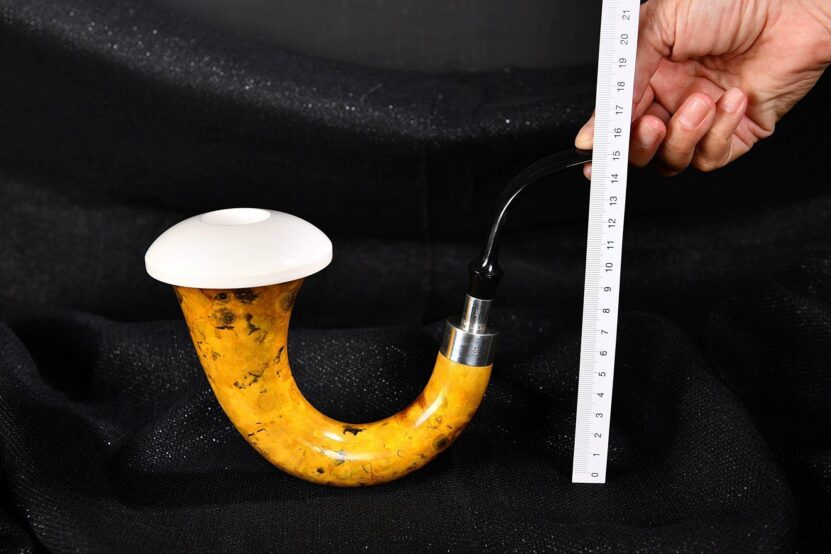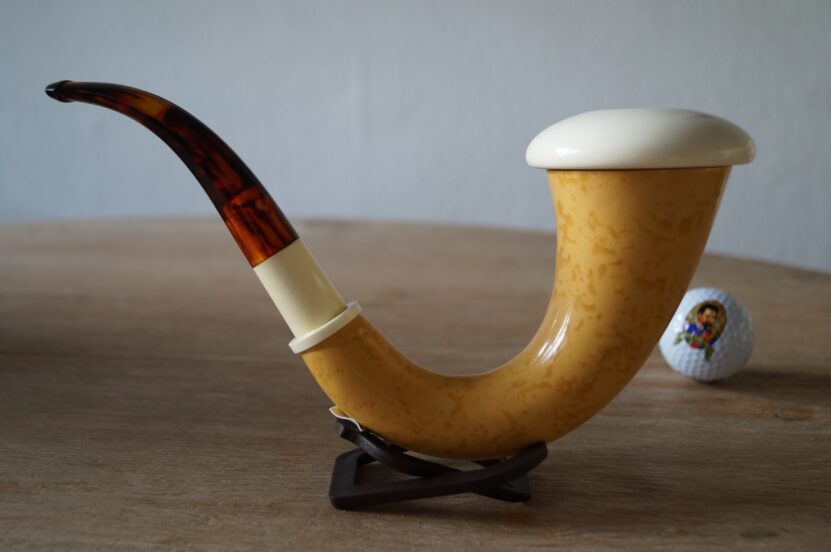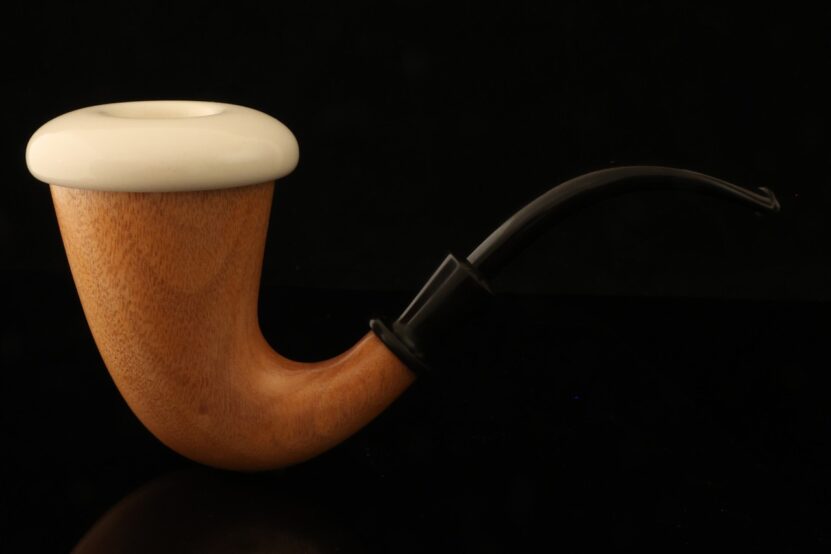The calabash pipe holds a rich legacy. Popularized by stage and screen portrayals of Sherlock Holmes, its history reaches far beyond Victorian detectives and Hollywood props.
Its form, material, and mystique give it a status unmatched by any other smoking pipe.
Origins of the Calabash Pipe

The calabash is crafted from the dried shell of the gourd known as Lagenaria siceraria. This gourd, native to Africa and cultivated for centuries, became the base for one of the most iconic smoking instruments ever made. Its curved shape and hollow body made it ideal for transformation into a bowl.
Pipe makers often paired the calabash gourd with a meerschaum insert. Meerschaum, a soft white mineral found mainly in Turkey, absorbs moisture and nicotine. The combination creates a dry, cool smoke with a mellow flavor.
European craftsmen, especially in Austria and Germany, refined the design during the late 1800s. They added fitted caps, silver mounts, and polished stems. By the early 20th century, the calabash gained recognition across Europe and North America.
Even if you cannot find the exact model Sherlock Holmes used, you can still enjoy outstanding designs with that same iconic curve. Pipe brands available at Pipeonline.it offer several high-quality options inspired by traditional styles.
Sherlock Holmes and the Theatrical Legacy

The calabash became inseparable from the image of Sherlock Holmes not due to Arthur Conan Doyle’s writing but due to stage performance needs. Early illustrators, including Sidney Paget, drew Holmes with a straight pipe. However, actor William Gillette, who portrayed Holmes in over 1300 performances, chose the calabash pipe instead.
He made the switch for practical reasons. The bent shape allowed him to speak clearly without removing the pipe. That choice soon influenced countless portrayals, including the most famous image of all: Basil Rathbone’s Holmes. Public perception of the detective fused with the calabash pipe forever.
Construction and Functionality
The calabash design follows function as much as form. The gourd base creates a large air chamber beneath the bowl. This chamber cools and dries the smoke before it reaches the stem.
Key components include:
- Calabash Gourd Base: Lightweight, durable, naturally curved
- Meerschaum Bowl Insert: Porous and heat-resistant
- Detachable Stem: Often made of vulcanite or amber
- Silver or Metal Fittings: Found on high-end pipes for durability and decoration
The result is a pipe that delivers an exceptionally smooth draw. Even among seasoned pipe smokers, it remains a favorite for long sessions and cooler smoke.
Fun Facts and Cultural Appearances

- Wartime Popularity: British officers in World War I favored calabash for their refined appearance and smoking quality.
- Hollywood Standard: Prop departments loved the calabash for its striking silhouette. It became shorthand for “intellectual detective.”
- Comedy Use: Even comedians adopted the pipe in parody sketches of Holmes. It helped convey intelligence or eccentricity instantly.
- Collector’s Item: Authentic vintage calabash pipes with real meerschaum inserts now fetch high prices among collectors.
- Handcrafting Tradition: Pipe artisans in South Africa and Turkey still follow traditional methods using seasonal gourds and hand-carved meerschaum.
Gourd Farming and Craftsmanship
Calabash gourds are grown on trellises to encourage their natural curve. Once matured, the gourds are dried over several months. After curing, the inner flesh is scooped out and the shell sanded and sealed.
Each gourd is unique. Pipe makers must match the curve and size of the gourd to a properly fitted meerschaum bowl. High-end calabash pipes take several weeks to finish and often include ornate carvings or customized mounts.
Meerschaum: The Unsung Hero

The mineral used in most calabash inserts—meerschaum—translates to “sea foam” in German due to its lightweight and porous nature. When used in a pipe, it filters out tar and moisture. Over time, the material changes color, turning golden brown with use, which many collectors find appealing.
The mining of meerschaum remains mostly limited to Turkey, especially near the city of Eskişehir. Skilled artisans carve the inserts by hand, ensuring a precise fit.
Common Myths and Misconceptions
- Not All Holmes Pipes Are Calabash: Many films and illustrations use straight pipes or briar variations.
- It’s Not Made of Wood: The calabash base is a dried gourd, not carved wood.
- Not Easy to Mass Produce: Each gourd grows differently, making each pipe one of a kind.
- Calabash Pipes Are Not Just Props: Serious pipe smokers continue to use them for their cooling effect and quality.
Closing Thoughts
The calabash is not a novelty. Its roots in African agriculture, refinement in European workshops, and rise to cultural fame through Sherlock Holmes form a complete and fascinating journey. It represents craftsmanship, creativity, and tradition.
Any serious look at pipe history must place the calabash at the center. Its lasting appeal goes beyond detective fiction. Its presence in art, film, and personal collections proves that no other pipe holds quite the same allure.









